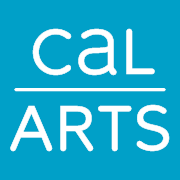
Typography is the art of manipulating the visual form of language to enrich and control its meaning. It’s an essential area of skill and knowledge for graphic designers. Typography predates modern graphic design by around 500 years; it is rich in rules, conventions, and esoteric terminology—but it remains an exciting space for invention and expression.
Read more
Typography is the art of manipulating the visual form of language to enrich and control its meaning. It’s an essential area of skill and knowledge for graphic designers. Typography predates modern graphic design by around 500 years; it is rich in rules, conventions, and esoteric terminology—but it remains an exciting space for invention and expression.
Typography is the art of manipulating the visual form of language to enrich and control its meaning. It’s an essential area of skill and knowledge for graphic designers. Typography predates modern graphic design by around 500 years; it is rich in rules, conventions, and esoteric terminology—but it remains an exciting space for invention and expression.
In this rigorous introductory course, we will study, name, and measure the characteristics of letterforms. We’ll consider the pragmatic concerns involved in selecting and combining type. We’ll peek into the rich historical, cultural, and aesthetic histories of familiar typefaces. We’ll discuss time-tested conventions and best practices in setting type, as governed by principles of hierarchy and spatial organization. And we’ll explore the expressive, meaning-making potential of type.
Informative lectures will be complemented by a series of three peer-assessed assignments, culminating in an opportunity to design a full-scale typographic poster.
Please note that this is not a software course; a basic working knowledge of Adobe InDesign or other page layout software will be assumed. You will need access to a computer and page layout software, such as InDesign, to complete the assignments.
What's inside
Syllabus
Week 1: Talking Type
This week, we’ll take an up-close look at typefaces, both as physical artifacts and as works of design.
We will study the formal elements that define and give character to type, and understand where they came from and why they look the way they do. We will review the terminology and measuring system used to describe type, and look at the way the form and proportion of letters relate to the practical concerns of selecting and combining typefaces. The week will wrap up with a graded quiz.
Read more
Syllabus
Good to know
Save this course
Reviews summary
Typography terms and concepts
Activities
Review the basics of typography
Show steps
Reacquaint yourself with the fundamentals of typography before starting the course.
Browse courses on
Typography
Show steps
-
Read articles or watch videos on the basics of typography.
-
Review your notes from previous typography courses or workshops.
-
Take a practice quiz or test to assess your knowledge.
Organize your learning materials
Show steps
Ensure that your notes, assignments, and other course materials are well-organized for easy reference and review.
Browse courses on
Organization
Show steps
-
Set up a dedicated folder or notebook for the course.
-
File your notes and assignments in a logical and easy-to-find manner.
-
Regularly review your materials to reinforce your learning.
Practice identifying different typefaces
Show steps
Improve your ability to recognize and distinguish between different typefaces.
Browse courses on
Typography
Show steps
-
Visit websites like Typewolf or FontSquirrel that provide examples of different typefaces.
-
Look at the typefaces and try to identify their characteristics, such as serif or sans-serif, weight, and style.
-
Take quizzes or play games that test your ability to identify typefaces.
Five other activities
Expand to see all activities and additional details
Show all eight activities
Read "Type on Screen" by Erik Spiekermann
Show steps
Familiarize yourself with the principles of typography as they apply to digital screens.
View
Stop Stealing Sheep & find out how type works...
on Amazon
Show steps
-
Read chapters 1-3 to learn the basics of typography.
-
Read chapters 4-6 to understand the challenges of typography on screen.
-
Complete the exercises in chapters 7-8 to practice applying the principles you've learned.
Watch tutorials on typographic hierarchy and spatial organization
Show steps
Learn how to use typographic hierarchy and spatial organization to improve the readability and impact of your designs.
Browse courses on
Typography
Show steps
-
Search for tutorials on typographic hierarchy and spatial organization on YouTube or Skillshare.
-
Watch the tutorials and take notes on the key concepts.
-
Apply the concepts you've learned to your own design projects.
Participate in a peer review session
Show steps
Provide constructive feedback to your peers and receive feedback on your own work, fostering a sense of community and improving your understanding of typography.
Browse courses on
Typography
Show steps
-
Find a partner or group of peers who are also taking the course.
-
Exchange your work with your peers.
-
Provide constructive feedback on your peers' work, focusing on both the strengths and weaknesses.
-
Incorporate the feedback you receive into your own work.
Create a typographic poster for a local event
Show steps
Reinforce your knowledge of typography by designing a poster that meets specific design requirements.
Browse courses on
Typography
Show steps
-
Choose an event to promote.
-
Write a brief description of the event.
-
Select images or graphics that represent the event.
-
Use your typography skills to create a visually appealing poster.
-
Print and distribute your poster.
Design a full-scale typographic poster
Show steps
Synthesize your learning by designing a comprehensive and polished typographic poster that showcases your skills.
Browse courses on
Typography
Show steps
-
Choose a topic or message for your poster.
-
Research different typefaces and styles to determine the best fit for your message.
-
Create a rough sketch of your poster.
-
Use a design software to refine your design and add elements like images or graphics.
-
Print your poster or share it online.
Review the basics of typography
Show steps
Reacquaint yourself with the fundamentals of typography before starting the course.
Browse courses on
Typography
Show steps
- Read articles or watch videos on the basics of typography.
- Review your notes from previous typography courses or workshops.
- Take a practice quiz or test to assess your knowledge.
Organize your learning materials
Show steps
Ensure that your notes, assignments, and other course materials are well-organized for easy reference and review.
Browse courses on
Organization
Show steps
- Set up a dedicated folder or notebook for the course.
- File your notes and assignments in a logical and easy-to-find manner.
- Regularly review your materials to reinforce your learning.
Practice identifying different typefaces
Show steps
Improve your ability to recognize and distinguish between different typefaces.
Browse courses on
Typography
Show steps
- Visit websites like Typewolf or FontSquirrel that provide examples of different typefaces.
- Look at the typefaces and try to identify their characteristics, such as serif or sans-serif, weight, and style.
- Take quizzes or play games that test your ability to identify typefaces.
Read "Type on Screen" by Erik Spiekermann
Show steps
Familiarize yourself with the principles of typography as they apply to digital screens.
View
Stop Stealing Sheep & find out how type works...
on Amazon
Show steps
- Read chapters 1-3 to learn the basics of typography.
- Read chapters 4-6 to understand the challenges of typography on screen.
- Complete the exercises in chapters 7-8 to practice applying the principles you've learned.
Watch tutorials on typographic hierarchy and spatial organization
Show steps
Learn how to use typographic hierarchy and spatial organization to improve the readability and impact of your designs.
Browse courses on
Typography
Show steps
- Search for tutorials on typographic hierarchy and spatial organization on YouTube or Skillshare.
- Watch the tutorials and take notes on the key concepts.
- Apply the concepts you've learned to your own design projects.
Participate in a peer review session
Show steps
Provide constructive feedback to your peers and receive feedback on your own work, fostering a sense of community and improving your understanding of typography.
Browse courses on
Typography
Show steps
- Find a partner or group of peers who are also taking the course.
- Exchange your work with your peers.
- Provide constructive feedback on your peers' work, focusing on both the strengths and weaknesses.
- Incorporate the feedback you receive into your own work.
Create a typographic poster for a local event
Show steps
Reinforce your knowledge of typography by designing a poster that meets specific design requirements.
Browse courses on
Typography
Show steps
- Choose an event to promote.
- Write a brief description of the event.
- Select images or graphics that represent the event.
- Use your typography skills to create a visually appealing poster.
- Print and distribute your poster.
Design a full-scale typographic poster
Show steps
Synthesize your learning by designing a comprehensive and polished typographic poster that showcases your skills.
Browse courses on
Typography
Show steps
- Choose a topic or message for your poster.
- Research different typefaces and styles to determine the best fit for your message.
- Create a rough sketch of your poster.
- Use a design software to refine your design and add elements like images or graphics.
- Print your poster or share it online.
Career center
Graphic designer
Art Director
UX Designer
Web Designer
Marketing Manager
Public relations manager
Social Media Manager
Copywriter
Editor
Librarian
Teacher
Professor
Researcher
Writer
Journalist
Reading list
Share
Similar courses
OpenCourser helps millions of learners each year. People visit us to learn workspace skills, ace their exams, and nurture their curiosity.
Our extensive catalog contains over 50,000 courses and twice as many books. Browse by search, by topic, or even by career interests. We'll match you to the right resources quickly.
Find this site helpful? Tell a friend about us.
We're supported by our community of learners. When you purchase or subscribe to courses and programs or purchase books, we may earn a commission from our partners.
Your purchases help us maintain our catalog and keep our servers humming without ads.
Thank you for supporting OpenCourser.



